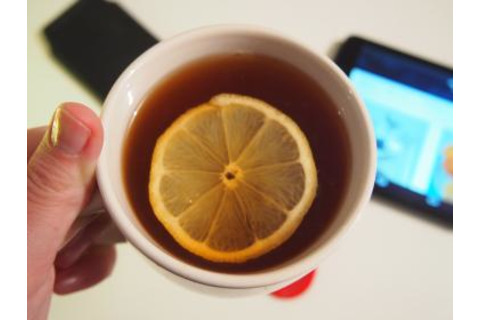
photo credits: flickr/A Girl with Tea Tea is the perfect beverage. It can be bitter and astringent, or creamy and smooth. You can choose a variety with a high caffeine content for a study session, or a tea with less caffeine for bedtime. Make a refreshing iced tea in the summer, or brew it hot and serve it to an upset friend as social convention dictates, according to Dr. Sheldon Cooper. There are many variations on the standard cup of tea, and each has its own place in time, temperature, and culture. Black tea made from the dried and fermented leaves of Camellia simensis is the most accepting of additions. It is strong enough in flavor to not be dominated by milk, sugar, or lemon, and won’t curdle dairy products like some herbal or citrus teas do.

The primary phenolic compounds in black tea are tannins, mostly theaflavins and thearubigines, which are formed during the fermentation process.[1] Phenolic compounds like these are natural defense compounds produced by plants to protect themselves from insects, but they have some important biological roles in human health too. They act as both antioxidants and anti-inflammatories, which can squelch free radicals in our body that damage DNA, proteins, and cell membranes. Their interactions with the milk, lemon juice, or ice that you add to your tea determine how your drink will look and taste. With milk A bit of cream, half and half, or milk are popular additions to black tea. I’ve always found that adding cream takes a slight edge off the tea’s bitterness, and I previously assumed that the added creaminess was simply diluting the bitterness or distracting me from noticing it, like sugar does. As it turns out, milk reacts on a molecular level with tea’s phenolic compounds and makes tea taste smoother and less astringent. Phenolic compounds that have diffused from the tea leaves bind to milk proteins (namely casein and whey) and become unavailable to our taste buds so we can’t taste them.[2] Despite the numerous studies, the binding mechanisms of tea polyphenols with milk proteins has not been clarified yet, nor is it clear whether this binding affects the antioxidizing properties of phenols.[3]With Lemon

Some people add lemon juice to tea to add a tart, fresh note to their drink. Lemon juice also lightens the color of brewed black tea by changing the pH of the solution and altering the structure of thearubigines. Thearubigin compounds are weak acids. This means they release some of their hydrogen atoms into water, leaving behind a negatively charged molecule which is darker in color than it is when neutral. Lemon juice, which is more strongly acidic, releases more hydogen ions which are then taken up by negative thearugibin ions and makes them appear lighter in color. Conversely, using alkaline brewing water tends to make tea color deeper than neutral water^2. Iced If you add ice to tea brewed in hot water, it will become cloudy due to the formation of an opaque complex that forms between caffeine and theaflavin at low temperatures^2. If this bothers you, brew the tea at room temperature over several hours. Brewing in cooler water extracts less caffeine and theaflavin than brewing in hot water, so the caffeine-theflavin complexes don’t form in sufficient quantities to become visible in the tea.^2 It makes for clear tea, but it does require some planning ahead.
Sources[1] Gallo, Monica, Giovanni Vinci, Giulia Graziani, Carmela De Simone, and Pasquale Ferranti. "The Interaction of Cocoa Polyphenols with Milk Proteins Studied by Proteomic Techniques." Food Research International 54 (2013): 406-15. Elsevier. Web. 9 June 2016. [2] McGee, Harold. "Flavorings from Plants: Herbs and Spices, Tea and Coffee." On Food and Cooking: The Science and Lore of the Kitchen. 1st ed. New York: Scribner, 2004. N. pag. Print. [3] Wipatanawin, Angkana, Sudarat Phongsawanit, Thadthanan Maneeratprasert, Sittiwat Lertsiri, and Pawinee Dee Tae. "Determination of the Effects of Adding Milk and Sugar on the Antioxidant Capacity of Oolong Tea by Chemical and Cell Culture-Based Antioxidant Assays." Chiang Mai J. Sci. 42.3 (2014): 699-711. Print.
Elsbeth Sites received her B.S. in Biology at UCLA. Her addiction to the Food Network has developed into a love of learning about the science behind food. Read more by Elsbeth Sites

About the author:













